Visual pollution

Visual Pollution
How do we fight back against the incessant flow of logos, brands, slogans and jingles that submerge our streets, invade our homes and flicker on our screens? We could wage a counteroffensive at the level of content: attacking individual advertisements when they cross the decency line and become deceptive, violent or overly sexual. But this approach is like using napkins to clean up an oil spill. It fails to confront the true danger of advertising – which is not in its individual messages but in the damage done to our mental ecology by the sheer volume of its flood.
The first step to confronting advertising is to stop seeing it as a form of commercialized communication and start considering it to be a kind of pollution. Think about the long-term mental consequences of seeing women’s bodies sexually objectified, for example, or whether repetitive exposure to American Apparel’s patriarchal imagery might damage our psyches. Questions like these get at the heart of advertising and lead us to mental environmentalism.
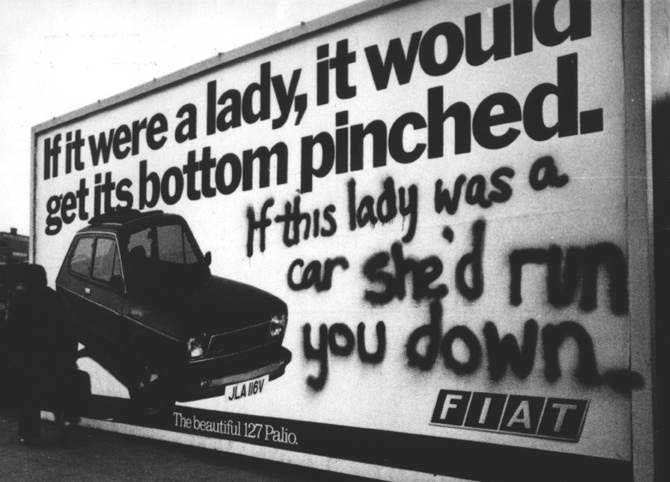
Image: A 1980s Ford ad gets subverted for its sexist, partriachal message
Concern over the cumulative psycho-social effects of advertisements is as old as advertising itself. The French novelist Émile Zola, to provide a notable early example, wrote what may be the first mental environmentalist short story, Death by Advertising, in 1866. He returned to the theme in 1883 with the celebrated novel Au Bonheur des Dames, a deeper look at advertising’s role in inducing a consumerist mindset. Throughout the next hundred years, mental environmentalist sentiments popped up in unexpected places such as Susan Sontag’s 1977 essay On Photography where she wrote that “industrial societies turn their citizens into image-junkies; it is the most irresistible form of mental pollution.”
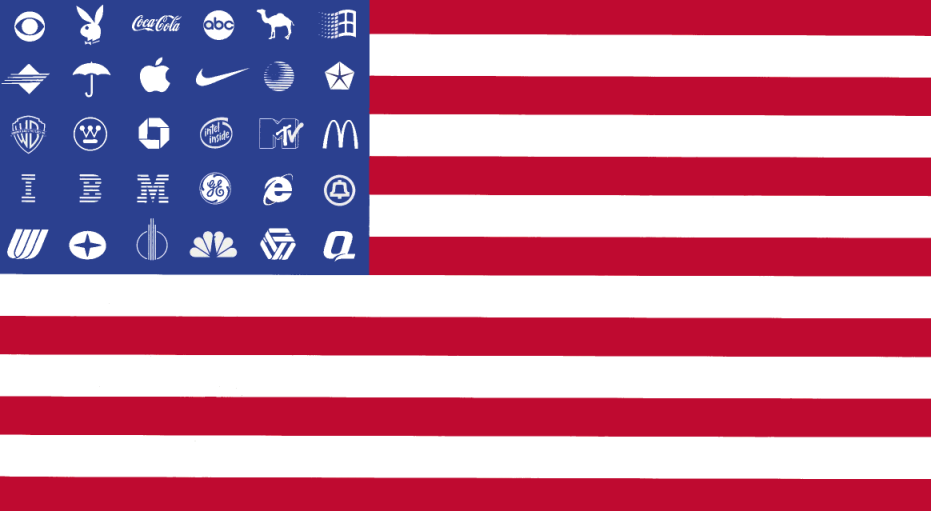
Image: Modern day consumerism was created post WWII in the US.
Although always a dispersed movement, since 1989 Adbusters: The Journal of the Mental Environment, has served as its center, and many of mental environmentalism’s most important documents have appeared in these pages. A key formulation was Bill McKibben’s 2001 article from Adbusters #38, in which he explained how “mental environmentalism may be the most important notion of this new century.” But it was Kalle Lasn’s seminal 1999 book-length manifesto Culture Jam which not only offered the mental environmentalist critique in its fullness but also elevated it into a formula for revolutionary social change. “We will jam the pop-culture marketeers and bring their image factory to a sudden, shuddering halt,” Lasn declared. “On the rubble of the old culture, we will build a new one with a non – commercial heart and soul.”
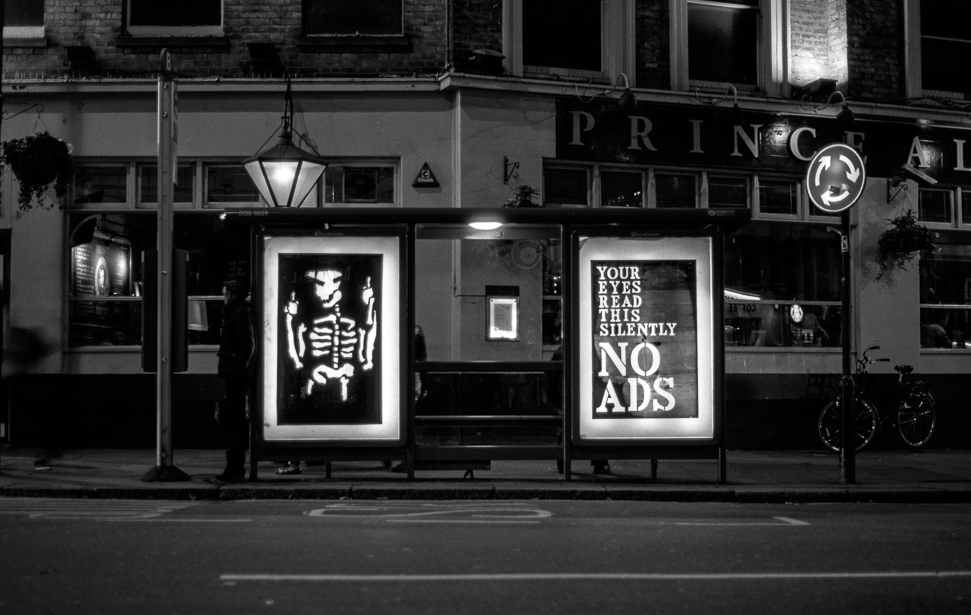
Image: Brandalism artists Anthony Lister & John Fekner, London, 2014
Since Zola, however, mental environmentalism has been stuck in a philosophical morass. To claim that advertising is metaphorically mental pollution is one thing, namely an easily dismissible rhetorical flourish. To say that advertising is literally a kind of pollution and that TV commercials and highway billboards are more closely related to toxic sludge than to speech is another matter entirely. And while mental environmentalists have always tried to make the latter argument, they have more often been forced to retreat to the former. Where is the evidence that advertising is a species of pollution? Isn’t it obvious that a corporate slogan is nothing but glorified, commercialized speech?
Into this difficult question has stepped one of the greatest living philosophers, the eccentric Michel Serres, who has written the inaugural philosophical work of the mental environmentalist movement. Malfeasance: Appropriation Through Pollution? is a radical reconception of pollution that cements its primal relation to advertising. The big idea of this recently translated book is that animals, humans included, use pollution to mark, claim and appropriate territory through defiling it, and that over time this appropriative act has evolved away from primitive pollution, urine and feces, to “hard pollution,” industrial chemicals, and finally to “soft pollution,” the many forms of advertising.
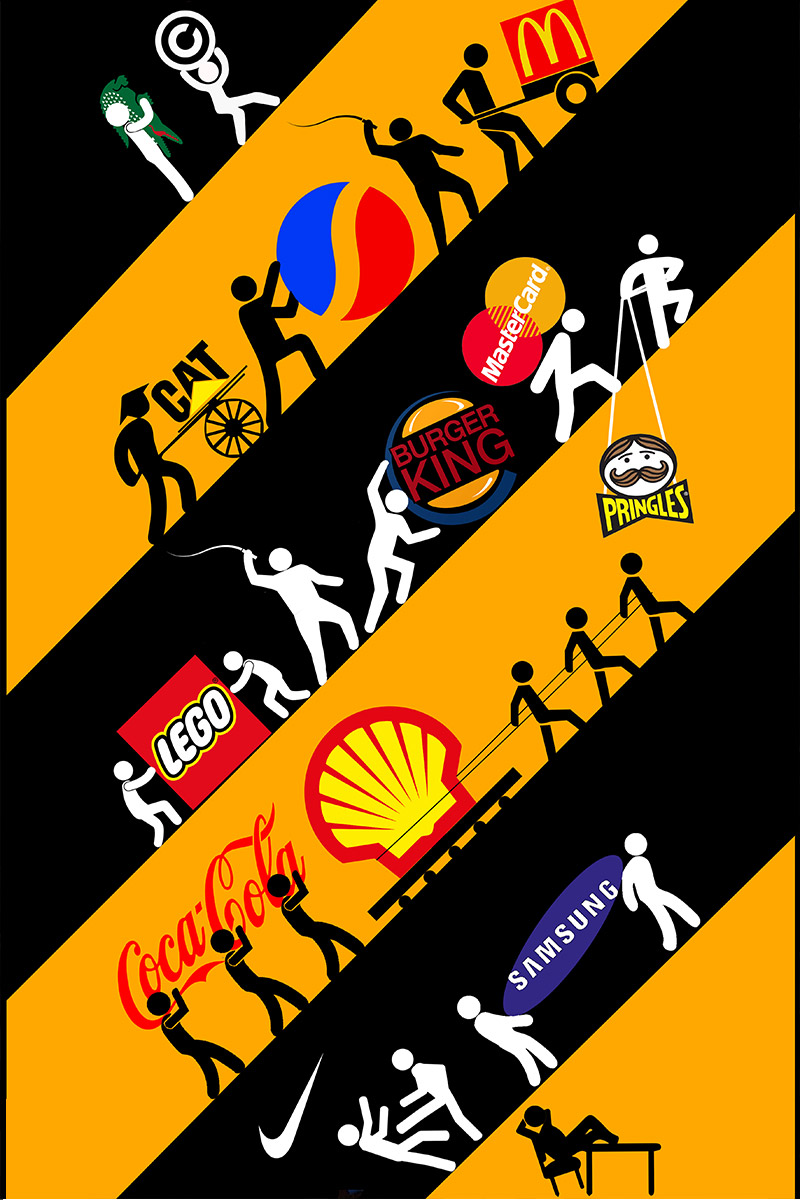
Artist: ILL (IRAN), 2017
“Let us define two things and clearly distinguish them from one another,” Michel Serres writes;
“first the hard [pollutants], and second the soft. By the first I mean on the one hand solid residues, liquid gases, emitted throughout the atmosphere by big industrial companies or gigantic garbage dumps, the shameful signature of big cities. By the second, tsunamis of writings, signs, images and logos flooding rural, civic, public and natural spaces as well as landscapes with their advertising. Even though different in terms of energy, garbage and marks nevertheless result from the same soiling gesture, from the same intention to appropriate, and are of animal origin.”
Michel Serres is the first to philosophically ground mental environmentalism upon a unified theory of pollution that explains how advertisements are actually a breed of industrial pollutant. Lacking this, mental environmentalists have hitherto skirted this central problem by taking up Zola’s contention that advertising is blameworthy for its role in making us into consumers. “The commercial media are to the mental environment what factories are to the physical environment,” Kalle Lasn and I wrote in Adbusters #90. “A factory dumps pollution into the water or air because that’s the most efficient way to produce plastic or wood pulp or steel. A TV station or website pollutes the cultural environment because that’s the most efficient way to produce audiences.” While this argument was true in Zola’s time and remains so today – and Serres too makes a similar point in his book – Serres has done something even more profound. He has shown why one cannot be an environmentalist without also being a mental environmentalist. In closing the gap between physical and mental toxins, Serres has closed the gap between physical and mental ecology.
Consider how, in the following quote from Serres, the critique of advertising resonates viscerally when the relation between advertisements and pollutants is not mere metaphor. “The captain who unloads waste in the high seas has never seen, or rather has never let, the countless smiles of the gods emerge; that would be too demanding, or even creative. Shitting on the world, has he ever seen its beauty before? Did he ever see his own beauty? And so, he who dirties space with billboards full of sentences and images hides the view of the surrounding landscape, kills perception, and skewers it by this theft. First the landscape then the world.”
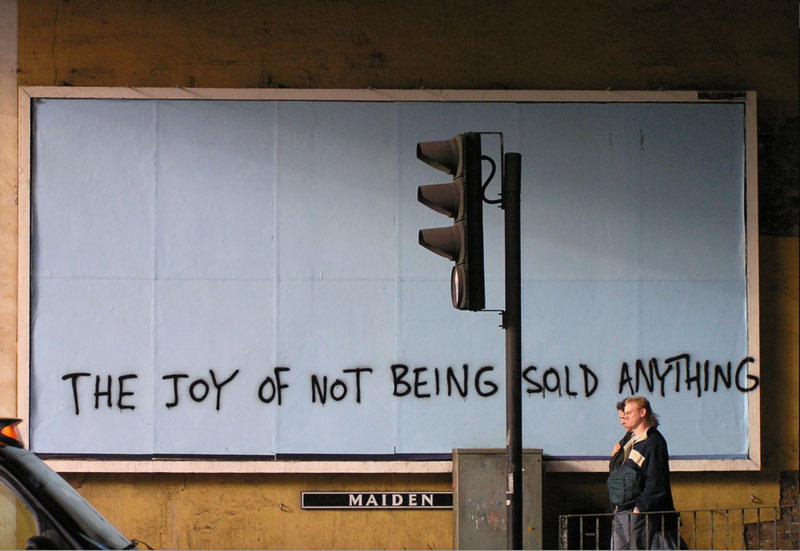
Image: Artwork by Banksy, London, 2015
The Earth is being claimed by corporations. Whether it is by appropriating the ocean with their oil spills or by seizing public spaces with their advertisements, corporations use hard and soft pollution to steal what is ours. Seen in this light, the fight against advertising is the defining struggle of our era, a unifying clash to prevent a legal fiction from usurping the common heritage of all beings. The stakes are high. Aware of the severity of the situation, Serres exhorts us to action, to dramatic social revolution along mental environmentalist lines.
“It makes me suffer so much that I need to say it over and over again and proclaim it everywhere; how can we not cry with horror and disgust confronted with the wrecking of our formerly pleasant rural access roads into the cities of France? Companies fill the space now with their hideous brands, waging the same frenzied battle as the jungle species in order to appropriate the public space and attention with images and words, like animals with their screams and piss. Excluded from those outskirts, I no longer live there; they are haunted by the powerful who shit on them and occupy them with their ugliness. Old Europe, what ignorant ruling class is killing you?”
Words by Micah White, Senior Editor, Adbusters
For dowloadable theory on the intersectional issues that advertising causes, please visit our Take Action section